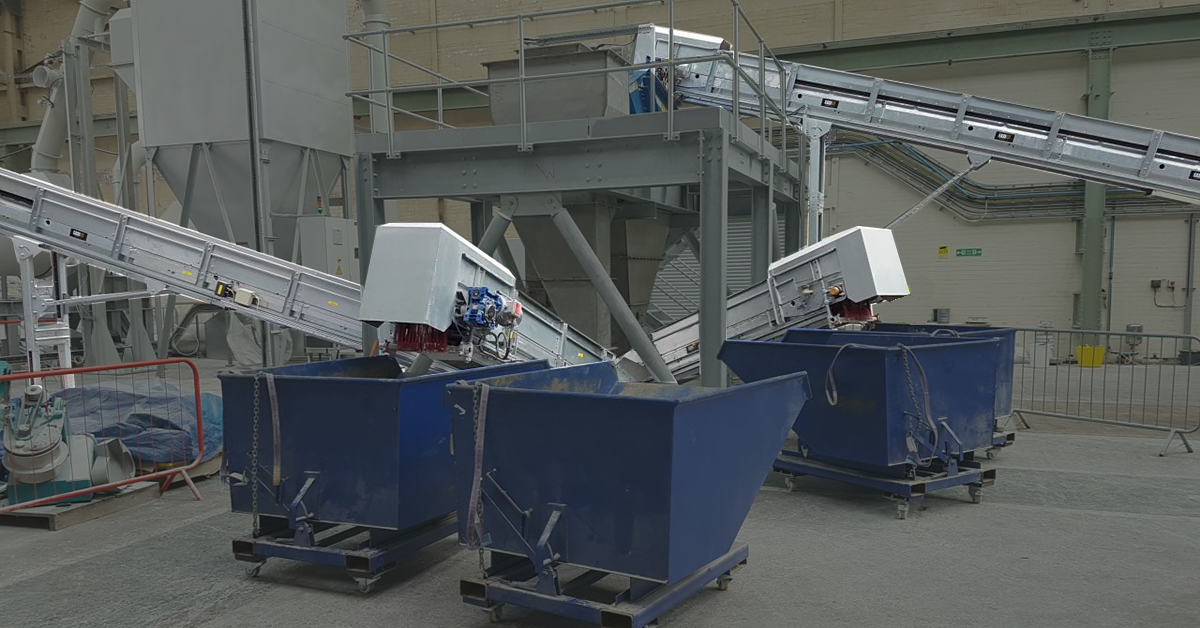In European countries, the plastic recycling rate sits between 10 and 30 per cent, with Germany recording the highest rate at 30 per cent. Differences in recycled materials and operating conditions may require different material properties, which is where new conveyor belts made of PVC and Thermoplastic polyurethane (TPU) can make a real difference.
Lower maintenance through PVC belts
Rubber belts have been the first choice in the recycling industry for decades because of their high mechanical strength, flexibility, and high abrasion resistance. However, their thickness and heavy weights put strain on the conveyors, pushing engineers to build heavier and bigger constructions that lead to increased costs and alignment issues. Also, rubber conveyors can be less efficient, needing more energy to run at high speeds of 2-4 m/s.
This is why lightweight materials like polyvinyl chloride (PVC) are a good solution for applications like plastic palletizing, because they allow users to build more complex, space-saving lines and are faster to run, requiring less energy to operate.
PVC is also a robust, more economical alternative to rubber. As well as having a better value-to-price ratio in many applications that are running in less demanding environments, PVC belts have lower maintenance costs because they are mostly used to transport lightweight materials like plastic and paper. The belt is placed under less mechanical strain, and therefore requires fewer replacements.
Due to its properties, PVC can be used in numerous plastic processing applications. For example, the process of trommel separation, which is the segregation of PET plastics into colour groups, requires belts that can withstand hot water and steam to remove potential contaminants and small parts of plastic.
A more environmentally friendly choice – TPU belts
TPU has good mechanical strength, meaning operators can place it under more strain without worrying about its performance. It is also super lightweight, almost half that of rubber, and allows sorting lines to become faster, wider, and more energy efficient.
Similarly, TPU is also a more environmentally friendly belt choice. This is because it doesn’t need to be replaced as often, reducing maintenance costs, and, when incinerated, it doesn’t release harmful gases. Producing it also creates less environmental waste and the belts are much easier to recycle.
TPU belts are ideal for sorting applications like wind-sifters and optical separators that remove foil film and paper, and allow plastic to be sorted by colour or resin type – all at speeds reaching 4.5 m/s. The lighter weight of TPU conveyor belts also means they can withstand higher forces of inertia at their joints, consume less energy and accumulate less dirt on the surface, which leads to better line efficiency. Light reflections are also reduced by ensuring the belt is black or Ocean Blue in colour, with a perfect matt finish.
It’s clear that, for industry to achieve its ambitious recycling targets by 2030, it will need faster and wider sorting lines to process a higher throughput of plastic. What’s more, plants will almost certainly need equipment that can process more complex technology for recycling. A good starting point is investing in the right conveyor belts that are robust, durable, and lightweight and made of materials that match the complexity of recycling plastics.
At Habasit, our research and development (R&D) team is constantly working with technology providers and equipment manufacturers to develop belts that keep up with the latest needs in the recycling industry.

























